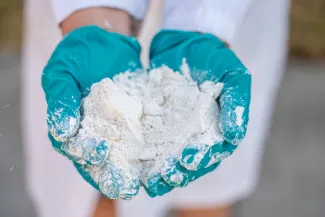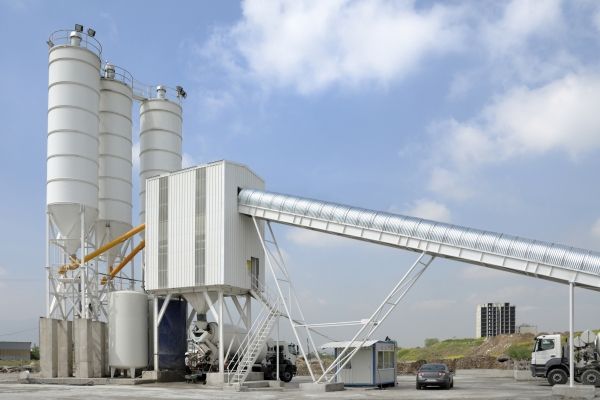
Flash Calciner: pilot infrastructure for developing and testing cement substitutes
Cement production currently accounts for 8% of all CO2 emissions worldwide. Portland cement production is therefore under severe pressure. The lab flash-calciner built by VITO in Mol with the support of the European Regional Development Fund (ERDF) meets the construction industry's demand for LOW-Impact building materials based on industrial residues.

Flash Calciner in a nutshell
- Convert clay-rich residual streams into cement substitutes
- Replacing up to 30% Portland cement without loss of strength
- Pilot infrastructure for stakeholders in the cement and construction value chain
- Process parameters and emissions mapped in detail
- Deployable from 2025
From residual stream to cement substitute
Dredging work, surplus soil or soil remediation sometimes leaves behind very clay-rich residual streams. These residual streams are ideal for calcination. In this process, they are heated to a temperature of between 600 and 1200°C. What then comes out of the furnace is calcined clay. This clay can replace up to 30% of Portland cement without losing strength. This process reintroduces residual streams into the production chain and reduces the CO2 emissions associated with producing Portland cement.
Are you a stakeholder in the cement and construction value chain? Use the Flash Calciner
The construction of the Flash Calciner infrastructure meets an urgent demand from the cement and construction industry. As a stakeholder in the cement and construction value chain you will have access to this new infrastructure for joint research, or research within the framework of a project. You will not only be able to carry out tests in this Flash Calciner, but at the same time you will also be able to obtain information about your residual streams. You can also have the developed alternative cements tested at mortar and concrete level.
Closely monitor process parameters and emissions
The Flash Calciner is equipped with various measuring points so that process parameters and emissions can be accurately monitored at any location. This allows future investors to test and adjust processes and collect the necessary data that can be used when applying for an environmental permit. The special thing about this pilot infrastructure is that it not only allows standard emission measurements but is also equipped to measure PFAS very specifically.
When can you start using the Flash Calciner?
The Flash Calciner should be completed in mid-2025. Would you like to be kept informed about the project's progress? Fill in the form below.
Would you like to know more?
Curious about the potential of the Flash Calciner? Contact Liesbet for more information.




